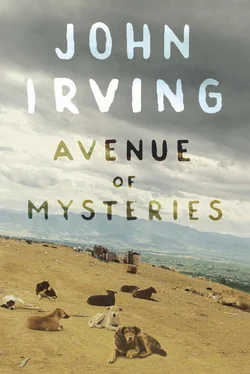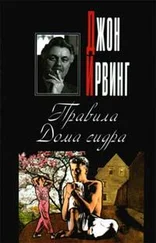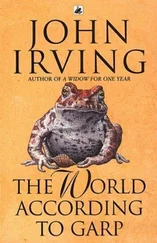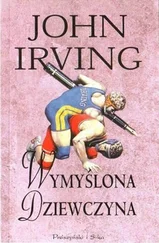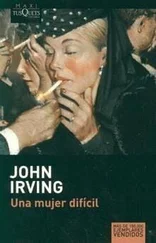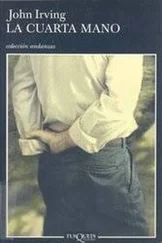“Actually,” Juan Diego said to the driver, “ I’m from Mexico.”
“I didn’t mean you, sir — you’re gonna get to JFK on time. Your problem is, you’re just gonna wait there,” the driver told him, not nicely. “There’s nothin’ flyin’—in case you haven’t noticed, sir.”
Indeed, Juan Diego hadn’t noticed that no planes were flying; he just wanted to be at the airport, ready to leave, whenever his flight departed. The delay, if there was one, didn’t matter to him. It was missing this trip that was unthinkable. “Behind every journey is a reason,” he found himself considering — before he remembered that he’d already written this. It was something he’d stated most emphatically in A Story Set in Motion by the Virgin Mary. Now here I am, traveling again — there’s always a reason, he thought.
“The past surrounded him like faces in a crowd. Among them, there was one he knew, but whose face was it?” For a moment, shrouded by the surrounding snow and intimidated by the vulgar limo driver, Juan Diego forgot that he’d already written this, too. He blamed the beta-blockers.
FROM THE SOUND OF him, Juan Diego’s limo driver was a rough-spoken, hateful man, but he knew his way around Jamaica, Queens, where a wide street reminded the long-ago dump reader of Periférico — a street divided by train tracks in Oaxaca. Periférico was where el jefe used to take the dump kids shopping for food; the cheapest, closest-to-rotten produce was available in that market, in La Central — except in 1968, during the student revolts, when La Central was occupied by the military and the food market moved to the zócalo in the center of Oaxaca.
That was when Juan Diego and Lupe were twelve and eleven, and they first became familiar with the area of Oaxaca around the zócalo. The student revolts didn’t last long; the market would move back to La Central, and Periférico (with that forlorn-looking footbridge over the train tracks). Yet the zócalo remained in the dump kids’ hearts; it had become their favorite part of town. The kids spent as much time away from the dump, in the zócalo, as they could.
Why wouldn’t a boy and girl from Guerrero be interested in the center of things? Why wouldn’t two niños de la basura be curious to see all the tourists in town? The city dump wasn’t on the tourist maps. What tourist ever went sightseeing in the basurero? One whiff of the dump, or the stinging in your eyes from the fires perpetually burning there, would send you running back to the zócalo; one look at the dump dogs (or the way those dogs looked at you) would do it.
Was it any wonder — around this time, during the student riots in 1968, when the military took over La Central and the dump kids started hanging around the zócalo — that Lupe, who was only eleven, began her crazy and conflicted obsessions with Oaxaca’s various virgins? That her brother was the only one who could understand her babble cut Lupe off from any meaningful dialogue with adults. And of course these were religious virgins, miraculous virgins — of the kind who commanded a following, not only among eleven-year-old girls.
Wasn’t it to be expected that Lupe would, at first, be drawn to these virgins? (Lupe could read minds; she knew no real-life counterpart who had her ability.) However, what dump kid wouldn’t be a little suspicious of miracles? What were these competing virgins doing to prove themselves in the here and now? Had these miraculous virgins performed any miracles lately ? Wasn’t Lupe likely to be super-critical of these highly touted but nonperforming virgins?
There was a virgin shop in Oaxaca; the dump kids discovered it on one of their first outings in the area of the zócalo. This was Mexico: the country had been overrun by the Spanish conquistadors. Hadn’t the ever-proselytizing Catholic Church been in the virgin-selling business for years? Oaxaca had once been central to the Mixtec and Zapotec civilizations. Hadn’t the Spanish conquest been selling virgins to the indigenous population for centuries — beginning with the Augustinians and the Dominicans, and thirdly the Jesuits, all pushing their Virgin Mary?
There was more than Mary to deal with now — so Lupe had noticed from the many churches in Oaxaca — but nowhere in the city were the warring virgins on such tawdry display as you could find them (for sale) in the virgin shop on Independencia. There were life-size virgins and virgins who were larger than life-size. To name only three who were featured, in a variety of cheap and tacky replicas, throughout the shop: Mother Mary, of course, but also Our Lady of Guadalupe, and naturally Nuestra Señora de la Soledad. La Virgen de la Soledad was the virgin whom Lupe disparaged as merely a “local hero”—the much-maligned Solitude Virgin and her “stupid burro story.” (The burro, a small donkey, was probably blameless.)
The virgin shop also sold life-size (and larger than life-size) versions of Christ on the Cross; if you were strong enough, you could carry home a giant Bleeding Jesus, but the principal purpose of the virgin shop, which had been in business in Oaxaca since 1954, was providing for the Christmas parties (las posadas).
In fact, only the dump kids called the place on Independencia the virgin shop; everyone else referred to it as the Christmas-parties store — La Niña de las Posadas was the actual name of the ghoulish shop (literally, “The Girl of the Christmas Parties”). The eponymous Girl was whatever virgin you chose to take home with you; obviously, one of the life-size virgins for sale could liven up your Christmas party — more than an agonizing Christ on the Cross ever could.
As serious as Lupe was about Oaxaca’s virgins, the Christmas-parties place was a joke to Juan Diego and Lupe. “The Girl,” as the dump kids occasionally called the virgin shop, was where they went for a laugh. Those virgins for sale weren’t half as realistic as the prostitutes on Zaragoza Street; the take-home virgins were more in the category of inflatable sex dolls. And the Bleeding Jesuses were simply grotesque.
There was also (as Brother Pepe would have put it) a pecking order of virgins on display in various Oaxaca churches — alas, this pecking order and these virgins affected Lupe deeply. The Catholic Church had its own virgin shops in Oaxaca; for Lupe, these virgins were no laughing matter.
Take the “stupid burro story,” and how Lupe loathed la Virgen de la Soledad. The Basílica de Nuestra Señora de la Soledad was grandiose — a pompous eyesore between Morelos and Independencia — and the first time the dump kids visited it, their access to the altar was blocked by a caterwauling contingent of pilgrims, countryfolk (farmers or fruit pickers, Juan Diego had guessed), who not only prayed in cries and shouts but ostentatiously approached the radiant statue of Our Lady of Solitude on their knees, virtually crawling the length of the center aisle. The praying pilgrims put Lupe off, as did the local-hero aspect of the Solitude Virgin — she was occasionally called “Oaxaca’s patron saint.”
Had Brother Pepe been present, the kindly Jesuit teacher might have cautioned Lupe and Juan Diego against a pecking-order prejudice of their own: dump kids have to feel superior to someone ; at the small colony in Guerrero, los niños de la basura believed that they were superior to countryfolk. By the behavior of the loudly praying pilgrims in the Solitude Virgin’s basilica, and given their cloddishly rustic attire, Juan Diego and Lupe were left with little doubt: dump kids were definitely superior to these wailing and kneeling farmers or fruit pickers (whoever the uncouth countryfolk were).
Lupe also had no love for how la Virgen de la Soledad was dressed; her severe, triangular-shaped robe was black, encrusted with gold. “She looks like an evil queen,” Lupe said.
Читать дальше
